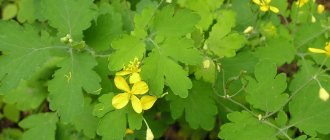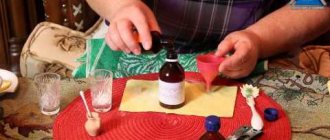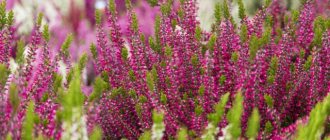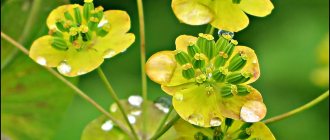What it looks like and where it grows
Agrimony grass is a representative of perennial plants of the Rosaceae family. Its straight stem reaches a height of 130-150 cm. The intermittently pinnate leaves are covered with small fibers, which is why the plant appears fluffy. They are collected in a small rosette located at the base of the stem. Flowers can have from 6 to 12 petals. The flowering process occurs in June-August. The fruits of the common agrimony are a single nut covered with small thorns. Because of them, the plant often clings to animal fur and people's clothing.
Common strawberry flowers are only yellow
Agrimony is often found in European countries, in the south of Belarus and Ukraine. In Russia, the plant grows mainly in the middle zone. The common strawberry lives on the outskirts of the forest, along field roads, near swampy ponds and along fences.
Comment! The diuretic effect of the plant is due to the content of galenic compounds.
Chemical composition
The benefits of agrimony for the human body are due to its rich composition. The necessary substances are contained both in the root system and in the seeds and leaf parts.
They contain the following components:
- fatty acid;
- essential oils;
- fructose;
- phytosterols;
- choline;
- coumarins;
- B vitamins;
- resinous substances;
- saponins;
- bitterness;
- minerals (zinc, copper, manganese, vanadium, chromium, nickel and iron);
- slime;
- alkaloids;
- flavonoids.
We recommend reading: Why does the body need zinc, where it is found, daily requirement
Acceleration of the regeneration process is provided by alkaloids, coumarins and saponins in the composition of agrimony. Minerals play an important role in strengthening the musculoskeletal system. Normalization of heart function occurs due to the content of phytosterols, B vitamins, cholines and chromium. Prevention of anemia is achieved by replenishing iron levels in the blood.
What are the benefits of agrimony herb for the human body?
Due to the fact that agrimony has a lot of medicinal properties, it is often used in alternative medicine. It has a powerful general strengthening effect. Due to its diuretic properties, it can even be used in the treatment of kidney diseases. The plant is no less effective against disorders of the gastrointestinal tract. Herbalists also consider agrimony as an anti-cold remedy. The remedy effectively strengthens the immune system and reliably protects the body from pathogens. The most pronounced beneficial properties of the plant include:
- anthelmintic effect;
- accelerating the regeneration process of the skin surface;
- improving the functioning of the central nervous system;
- normalization of heart function;
- strengthening blood vessels and capillaries;
- choleretic and diuretic effects;
- anti-inflammatory effect;
- normalization of the reproductive system;
- reducing the level of bad cholesterol in the blood;
- improvement of skin condition;
- antispasmodic effect;
- increasing immunity;
- expectorant effect.
The plant has a high content of essential oils
Important! The possibility of combining agrimony with medications should be checked with your doctor on an individual basis.
For women
For women, agrimony is indicated for heavy menstruation. The plant reduces muscle spasms, thereby reducing pain and the volume of discharge. This makes it easier to endure menstruation. It is often used to treat inflammatory diseases. In this case, the common strawberry eliminates pain and directs its action to the source of the problem. When used for douching, a herbal decoction can increase local immunity and get rid of pathogens. Additionally, the plant is used to make cosmetics for skin and hair.
For men
The healing properties of the agrimony plant encourage its use for the treatment of male diseases. It effectively copes with prostatitis and the inflammatory process that provokes it. Locally, agrimony is used for baldness. Its use is especially relevant in cases where the problem is caused by hormonal disorders. In older age, men use strawberries to prevent cardiovascular diseases. Sometimes agrimony decoction is also used to eliminate hangover syndrome.
Agrimony herb - medicinal properties and contraindications
Considering the common agrimony, its medicinal properties and contraindications, herbalists take into account the stems, leaves and flowers; they are used to treat ailments of the liver, gall bladder, and pancreas. In complex decoctions, this above-ground part of the plant helps get rid of vascular problems, joint pain, and dermatitis. The roots are brewed less frequently, in the treatment of cancer and to lower blood sugar, and the seeds are effective in the fight against enuresis and ailments of the urinary system.
What medicinal properties does agrimony have:
- anti-inflammatory;
- choleretic;
- antispasmodic;
- enveloping;
- antiparasitic.
Based on these abilities, it is determined for which diseases agrimony is used; the general list is very extensive. What does agrimony herb treat:
- liver and pancreas problems;
- failure of the kidneys;
- women's diseases;
- stomach and intestinal disorders;
- headache;
- dropsy;
- skin diseases;
- varicose veins;
- the presence of worms;
- tumors.
But even with such a list, we must not forget about contraindications. Therefore, before taking it, you need to test the tolerability of the components by dropping a little decoction on the elbow. If itching and redness do not appear after half an hour, the medicine can be used. In what cases is a magpie contraindicated:
- constipation;
- obstruction of the biliary tract;
- rapid blood clotting;
- low pressure;
- tendency to form blood clots.
Agrimony - medicinal properties and contraindications for women
Agrimony, whose medicinal properties and contraindications are worth knowing in the treatment of female ailments, is a good remedy for heavy and painful menstruation. It has a hemostatic effect, relieves pain, and improves overall well-being. But it is important to consider that with severe blood loss, even dizziness, the strength of the herb alone may not be enough.
Agrimony also exhibits medicinal properties for the following ailments:
- infectious diseases of the reproductive system;
- uterine polyps;
- ovarian cyst;
- fibroids, fibroids.
Tincture recipe for painful periods
Ingredients:
- agrimony – 1 tbsp. spoon;
- alcohol 70% - 5 tbsp. spoons
Preparation, use
- Pour alcohol over the grass and leave in a dark corner for 10 days.
- Strain, pour.
- Take three times a day, 10 drops per dose.
Agrimony - medicinal properties and contraindications for men
The herb agrimony also exhibits medicinal properties in the treatment of male ailments, helps restore hormonal balance, and remove inflammation in prostatitis. It also helps with baldness, which affects most men in adulthood and old age. Mix 250 ml of burdock oil with dry ground burdock root, leave for 3 weeks in the dark, then apply to the hair roots. Also, healers have long recommended agrimony tea for hangovers.
Hangover tea recipe
Ingredients:
- agrimony – 2 teaspoons;
- water – 1 tbsp.
Preparation, use
- Pour boiling water over the grass.
- Leave for 5 minutes, strain.
- Drink in 1-2 servings.
Cooking methods
The beneficial properties and contraindications of agrimony are especially relevant in alternative medicine. You can prepare a lot of different medicines from it. Each of them is effective against certain groups of diseases. Therefore, when choosing a recipe, you should proceed from the purpose of use. Depending on the preparation method, the concentration of the product will change.
Tea
The benefits and harms of agrimony tea are of particular interest to herbalists. It is often used to treat the stomach, kidneys, liver and intestines. Diluted tea is often given to children to ease the process of falling asleep and to relieve colic.
Components:
- 2 tbsp. l. dried agrimony;
- 300 ml water;
- 2 tsp. linden honey.
Manufacturing process:
- The common agrimony is poured into a teapot and filled with hot water.
- The infusion time is 5 minutes.
- Honey is added directly to the cup. It is advisable that the drink is slightly cooled.
We recommend reading: Honey: beneficial and medicinal properties, contraindications
Herbal tea is useful to drink before bed to prevent insomnia
Infusion
It is recommended to brew agrimony infusion to treat damage to the oral mucosa. In this case, it is used for rinsing. Internal administration of the infusion is indicated for diabetes, gastritis and pancreatitis. Sometimes the remedy is used to speed up the process of losing weight.
Ingredients:
- 200 ml boiling water;
- 20 g agrimony.
Recipe:
- The crushed plant is poured into a deep container and filled with hot water.
- The infusion process is carried out until the liquid cools completely. To enhance the effect, you can wrap the container in a towel.
- The finished infusion is filtered and then taken ½ tbsp. l. 3-4 times a day.
You can add a little honey to the cooled broth
Tincture
Components:
- 100 ml alcohol;
- 1 tbsp. l. dried agrimony.
Cooking steps:
- Dried leaves are placed in a dark glass container.
- They are filled with alcohol, after which the container is carefully sealed.
- The remedy is kept in a dark place for a week.
- Before use, strain the tincture. It should be taken in diluted form, based on a 1:1 ratio.
- Take 1 time per day, 1-2 tbsp. l.
To prepare the tincture, it is advisable to use freshly prepared raw materials.
Decoction
Ingredients:
- 600 ml water;
- 4 tbsp. l. dried agrimony.
Manufacturing process:
- The agrimony is poured with water and put on fire.
- After boiling, remove the broth from the stove and place it aside. Keep it covered until it cools completely.
- The strained broth is taken 1-3 tbsp. l. 3 times a day.
Strawberry decoction copes well with cardiovascular diseases
Advice! Collecting medicinal herbs on roadsides is strictly prohibited. It can absorb toxic substances.
Hairy burdock
Hairy burdock
Hairy burdock (Agrimonia pilosa L).
Family Rosaceae. Common names: dog burr, agrimony, hairy thorn, hairy burr. Hairy agrimony is a perennial herbaceous plant.
The stem is pubescent, simple or weakly branched, erect, from 30 to 120 cm in height.
Leaves are intermittently pinnate, pubescent below, pale; on top – green, smooth.
Flowers - collected at the tops of the stems in loose, spike-shaped racemes, small, pubescent, dark yellow in color.
The fruit is a tenacious bristly achene.
Flowering time: June – July.
Hairy agrimony is common in Russia, Moldova, Polesie (Ukraine), and the Carpathians. Grows in meadows, among bushes, in forests.
In folk medicine, roots and grass (flowers, leaves, stems) of plants are used for medicinal purposes. The grass is collected during flowering and dried in the shade under canopies. The roots are dug in the fall in September–October.
The plant is widely used as a diuretic, tonic, blood purifier, hemostatic, choleretic, gastric and astringent.
Tea or an infusion of burdock herb with honey is used for scrofulous rash, gonorrhea, stomach diseases, rheumatism, cholelithiasis, diseases of the gallbladder, liver, and diarrhea, as a diuretic.
Externally, the infusion of the herb is used as a wash for inflammatory diseases of the genitourinary tract and hemorrhoids; for washing ulcers, boils, bedsores, wounds; in the form of rinses for inflammation of the mucous membrane of the larynx and sore throat; in the form of compresses and lotions for bruises and abrasions; in the form of baths for skin diseases.
A decoction of the herb with honey is the most effective medicine for intestinal atony, fever, sand in the kidneys, liver diseases (cirrhosis, hepatitis, stones), spleen, gall bladder, as well as constipation.
A paste of fresh crushed leaves is applied to inflamed areas of the skin. To relieve fatigue after long treks, it is useful to take a bath with an infusion of the herb agrimony.
A decoction of the roots is used for benign and malignant tumors, rheumatism, and chronic hemorrhoids.
In Korean and Chinese medicine, the herb is used as a strengthening, tonic and hemostatic agent, and in Tibetan medicine it is used as an external remedy for conjunctivitis.
Mode of application.
♦ Pour a tablespoon of dry herb into a glass of boiling water, leave for 2 hours and strain. Take 1/3 cup three times a day, 15 minutes before meals, for liver and gallbladder diseases, gastrointestinal diseases.
♦ Pour a teaspoon of dry herb with a glass of water, simmer over low heat in a closed container for 2-3 minutes, leave for 2 hours and strain. Take 1/3 cup three times a day 15 minutes before meals for rheumatism, intestinal atony, liver disease, constipation. Sweeten the broth to taste with sugar or honey.
♦ Pour a glass of boiling water over a tablespoon of herb, leave for one hour and strain. Use as a rinse for inflammation of the mucous membrane of the larynx, aphthous stomatitis, sore throat and for irrigating the nasal cavity with a runny nose.
♦ Pour a tablespoon of crushed dry roots into a glass of water, boil over low heat in a closed container for 10 minutes, leave for one hour and strain. Drink 1/4-1/3 glass for benign and malignant tumors, rheumatism, hemorrhoids.
Source: Lavrenova G.V., Lavrenov V.K. Encyclopedia of Medicinal Plants
The use of agrimony herb in folk medicine
Agrimony can be used as an independent remedy or to complement the main therapy. It will be effective in both cases. The list of indications for its use is quite extensive. Most often, agrimony is used to treat diseases of the respiratory system. In addition, it copes well with bleeding and inflammatory processes.
For stomach diseases
For gastrointestinal diseases, the medicinal properties of agrimony are relevant. It is added to multifunctional herbal preparations. The effect of agrimony can be enhanced with the help of plantain, St. John's wort, mint and chamomile. It is recommended to take the medicinal infusion 100 ml up to 4 times a day. It normalizes the digestion process and relieves discomfort in the stomach.
For mastopathy
To treat mastopathy, women are recommended to use agrimony oil. To make it you will need the following components:
- 70 g dried plant;
- 500 ml olive oil.
Recommended reading: Benefits and how to take olive oil
Cooking steps:
- The chopped agrimony is poured with oil and put in a dark place.
- The duration of infusion of the remedy is 1 week.
- To get rid of mastopathy, apply the oil to the chest before bed and take 1-3 tsp. in a day. Take before meals.
It is advisable to store strawberry oil in a place protected from light.
For sore throat
For sore throat, use an infusion of agrimony. Gargle with the solution 3-4 times a day. The procedure helps to get rid of throat congestion and discomfort. The duration of treatment depends on the severity of the clinical picture. Usually it takes no more than 7-10 days.
To lower cholesterol
Medicinal products from agrimony effectively reduce the level of bad cholesterol in the blood. The desired effect is achieved due to the phytosterol content. The infusion is taken 3 times a day, 100 ml. This reduces the likelihood of developing atherosclerosis and strengthens the vascular cavity.
Agrimony for type 2 diabetes
Agrimony also shows good results in the treatment of type 2 diabetes. The combination of zinc and choline in its composition reduces insulin resistance. In addition, the plant restores hormone synthesis and prevents the development of obesity. For diabetes, it is recommended to take it in the form of a decoction, which is drunk 1 tbsp. l. 4 times a day.
Agrimony during pregnancy
It is not prohibited to use agrimony during pregnancy. It has a beneficial effect on the woman and her child. The plant helps strengthen the immune system and prepares the body for the upcoming birth. But it is important to remember that it can act as an allergen. Therefore, decoctions and infusions based on it should be used in limited quantities. Alcohol tincture is completely contraindicated.
Attention! A decoction of agrimony can be used to lower blood pressure and cleanse the blood.
Use for pancreatitis
Anyone who experiences heaviness in the right side after eating should familiarize themselves with the medicinal properties and use of agrimony for pancreatitis. To cope with unpleasant symptoms, you need to take 80 ml of agrimony infusion 3 times a day. The dose should be taken half an hour before meals. The total duration of treatment is 10-21 days, depending on the severity of the disease.
Application for liver and pancreas
Reviews indicate the effectiveness of treatment of the liver and pancreas with agrimony. The plant removes toxic substances from liver cells, promoting the restoration of the organ. It is recommended to take common strawberry, even with cirrhosis. In this case, the duration of therapy is 2-3 months.
The choleretic effect of agrimony allows it to be used to treat diseases of the pancreas. The herbal decoction should be taken 80 ml 5 times a day. Herbal medicine helps to cope with bile stagnation, thereby relieving abdominal discomfort.
Previously, due to its high prevalence, common strawberry was considered a weed
Agrimony application
Agrimony and its extraordinary properties are used in the treatment of diseases common among modern people: gastritis, diabetes, inflammation of the pancreas. With its help, hepatitis, urolithiasis, hypertension, liver, arrhythmia are treated.
Preparations from this plant increase the strength of heart contractions, reduce joint pain, help with gout, and remove stones from the urinary and gall bladder. They are used as a bile- and diuretic, which also has tonic, sedative, antispasmodic and diaphoretic properties.
Agrimony is very useful for sore throat, conjunctivitis, diathesis, asthma, cough, hemorrhoids. He is subject to such ailments as stomatitis, lumbago, oncology, polyposis, fibroids, diarrhea, scrofula.
How to cook and take agrimony
To prepare medicinal products, you can use all parts of the plant: root, stem, flowers, seeds. It is taken in various forms (infusions, decoctions, tinctures, tea). Before starting treatment, you need to consult your doctor in order to choose the right dose and draw up a medication regimen.
Decoction of agrimony
This drug is used for diseases: rheumatism, dropsy, various diseases of the gastrointestinal tract and liver. During a cold, ARVI, or sore throat, it is good to gargle with a decoction made from agrimony. It is used for external use for inflammation of the eyes, purulent wounds and furunculosis.
The decoction is prepared using 3 tbsp. tablespoons of dry finely chopped agrimony, poured with 0.5 liters of hot water and boiled for five minutes over low heat. The drug is taken per day in 3 doses of half a glass.
Agrimony infusion
An excellent remedy that is used in the treatment of the gastrointestinal tract, helping to stop diarrhea, vomiting, and heal ulcers. For infusion use 3 tbsp. spoons of herbs, which brew 0.5 liters of boiling water, after which you need to infuse it for two hours, strain thoroughly. Take the infusion similarly to the decoction, half a glass 3 times a day.
Agrimony tincture
One part of finely ground herb is poured with 5 parts of 70-degree alcohol. You need to insist in a dark room for 10 days. The tincture is then filtered and then poured into a glass bottle. Dosage regimen: 10 drops of tincture 2-3 times.
Application in cosmetology
The common agrimony is also widely used in cosmetology. It is valued for the following properties:
- elimination of age-related pigmentation;
- skin nutrition;
- acceleration of the regeneration process;
- relief of inflammatory processes;
- epidermis whitening.
Due to its antioxidant properties, agrimony is often used to care for mature skin. The infusion is added to homemade masks. They help reduce the intensity of age-related changes and prevent the appearance of new wrinkles. Liquid extract of the plant is effective against acne and psoriasis. Rinsing your hair with agrimony decoction makes it more manageable, soft and shiny.
Contraindications to the use of agrimonies and side effects
Agrimony has not only medicinal properties, but also contraindications. It is especially important to listen to them for people prone to developing allergies. Among the most important contraindications of common strawberry are:
- hypotension;
- obstruction of the biliary tract;
- high level of blood clotting;
- individual intolerance;
- tendency to constipation;
- breastfeeding period.
To prevent side effects, you should test for an allergic reaction. For these purposes, an infusion or decoction of agrimony is applied to the inner surface of the elbow. After a few hours, you can evaluate the body's reaction. The absence of a skin rash indicates tolerance to the plant. If an allergic reaction occurs, take an antihistamine immediately. Common side effects of agrimony include:
- bowel dysfunction;
- nausea;
- dizziness.
Comment! Excessive consumption of the medicinal plant can lead to the release of stones in the bile ducts, which can cause their damage.
Contraindications agrimony
Agrimony grass is one of the many medicinal plants that is incredibly useful in medicine.
But, at the same time, it should be used in various forms with extreme caution. Before starting treatment, it is best to consult with a doctor who specializes in your illness and can advise you on possible adverse reactions and acceptable dosages.
This plant is not prescribed:
- in the presence of individual intolerance
- and also if the patient has high blood clotting
- low pressure
- and a tendency to constipation.
Collection and preparation
The root part and leaves of the common agrimony are harvested for medicinal purposes. The above-ground part of the plant is usually collected in June-July. Stems with leaves must be cut from a height of 8-10 cm from the ground. The drying process of the sheet part is carried out in ventilated rooms on a flat surface or on specially equipped racks. You can also use a dryer, using a temperature no higher than 50 °C. For uniform and quick drying, you can hang the stems by connecting them into brooms.
In order for the medicinal properties of agrimony roots to be fully preserved, they must be dug up in the autumn, after the fruits have ripened. The roots are cleared of soil and washed with running water. Then they are laid out in an even layer in the attic under a canopy. In drying, the root part is harvested at a temperature of 60 °C.
The harvested raw materials retain their beneficial properties for 2 years. The roots are stored in a wooden container or canvas bags. The best packaging option for herbs would be paper bags.











